My Store
Brazilian Pink Fig Tissue Culture Plants "Ficus carica"
Brazilian Pink Fig Tissue Culture Plants "Ficus carica"
Couldn't load pickup availability
Brazilian Pink fig
Our Giant Brazilian fig plants and their cultivation according to the year’s seasons.
The fig is one of the seven species for which the land of Israel was noted and it has been an inseparable part of the scenery of the land of Israel since ancient times. The fig’s ripening season is relatively short, but supplies an abundance of fruit.
The fig is a cultivated deciduous tree, which reaches a height of 2–6 meters. It is a wide tree with white branches, a short trunk with gray, smooth bark.
The fig has large, thick, rough leaves that are hairy underneath and separated into 3–5 sections, like the fingers of a hand.
In the summer fig harvest takes place in June–July and the fall harvest in October–December.
Some people find that contact with fig leaves or branches irritates their skin. This is an external allergic reaction to contact with the hairs on the fig leaves or with the white sap secreted when you pick a leaf or cut a branch.
Self-Fruitful Trees Don't Need Cross-Pollination
Many types of fruiting trees can't set fruit unless they're cross-pollinated by another tree, which means you have to purchase at least two trees. But a fig tree is different '– it's "self-fruitful," which means that it can bear fruit without any pollinating help from a companion tree.
The fig, apart from being beautiful and sweet, is good for health and is regarded as a genuine ‘medicine cabinet’; Maimonides also relates to it in his writings.
It is a good source of nutritional fibers, which makes it easy to digest and it assists the sound functioning of the bowels. It is also a good source of calcium and potassium and it also provides the body with iron.
In folk medicine it is used to treat constipation, colds and problems of the digestive system, and the ‘milk’ collected from it is used to soften warts.
Site and Soil:
Figs do well in a variety of soils, but require at least 8 hours of sunlight during the growing season.
Pollination Requirements: Self-fruitful.
Hardiness: Hardy to between 0° & 5° F.
Bearing Age: 1-2 years after planting.
Size at Maturity: 8-10 ft in height, smaller with pruning.
Taste: Sweet
Fruit Skin: Dark brown
Fruit Flesh: Light amber
Bloom Time: Flowers are not noticeable as they are inside the fig.
Ripening Time: Late July – early August
Yield: 5-15kg. or more of figs per plant in a single growing season
Pests & Diseases: Figs are not bothered by pests in our region. Cover plants with netting if birds are a problem.
Fig Mosaic Virus is a benign virus that exists in all cultivated fig trees. Yellow spotting of the leaves is a cosmetic symptom that shows more in container culture, but is quickly outgrown once trees are planted in the ground.
Harvest
Once your fig tree is mature and producing, you should see a harvest of delicious figs from around la July through early September each year. A single Brown Turkey Fig tree can produce as much as 5-15kg. or more of figs per plant in a single growing season, so be ready for quite the harvest!
Container Planting
If you live in an area with heavy winters or have a small yard, consider planting your fig tree in a container. With proper pruning, it can grow up to 10 feet tall. Be sure to bring it inside when the weather freezes and place it in a sunny warm spot. While your container tree probably won’t produce fruit, it will still provide ornamental value to your surroundings.
Share
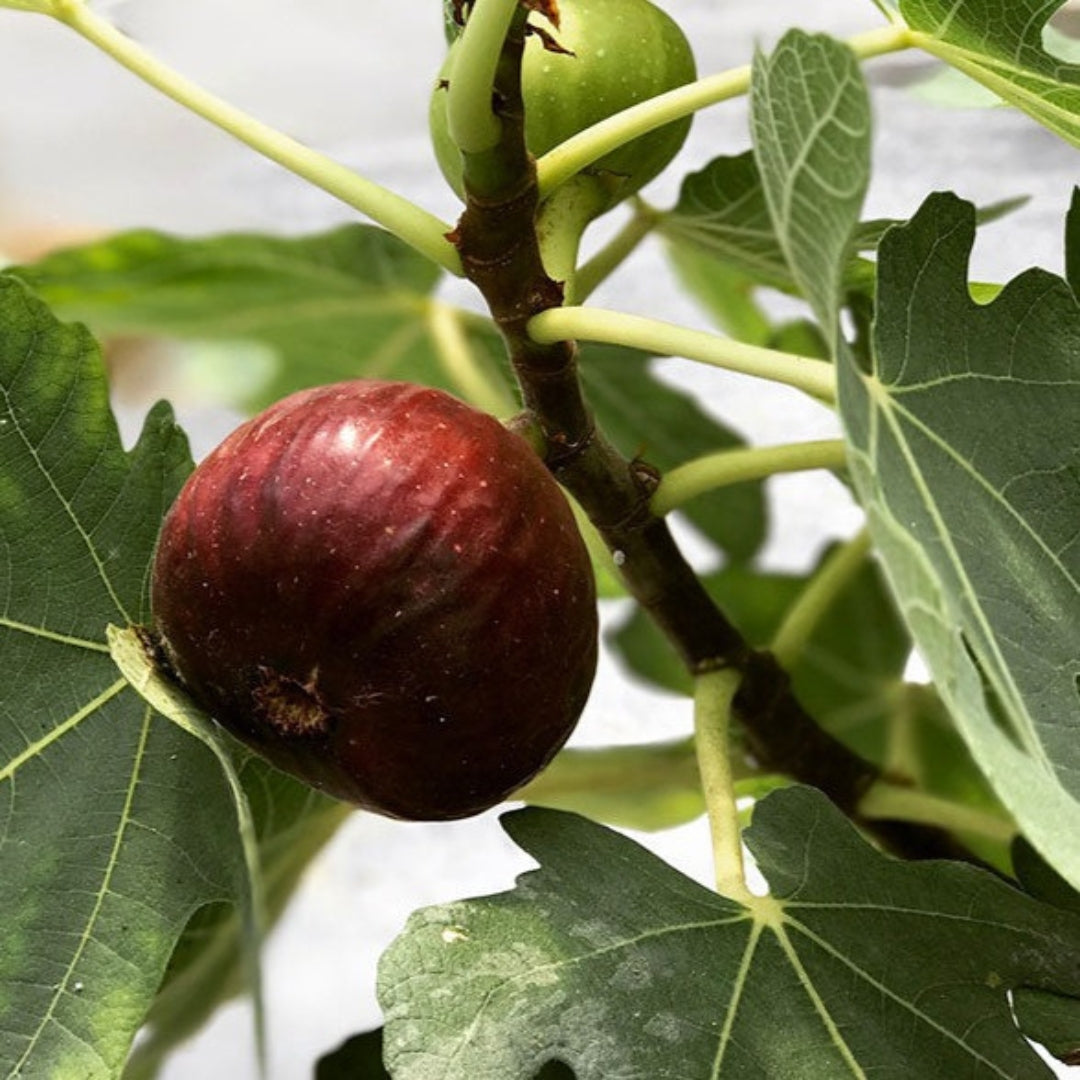
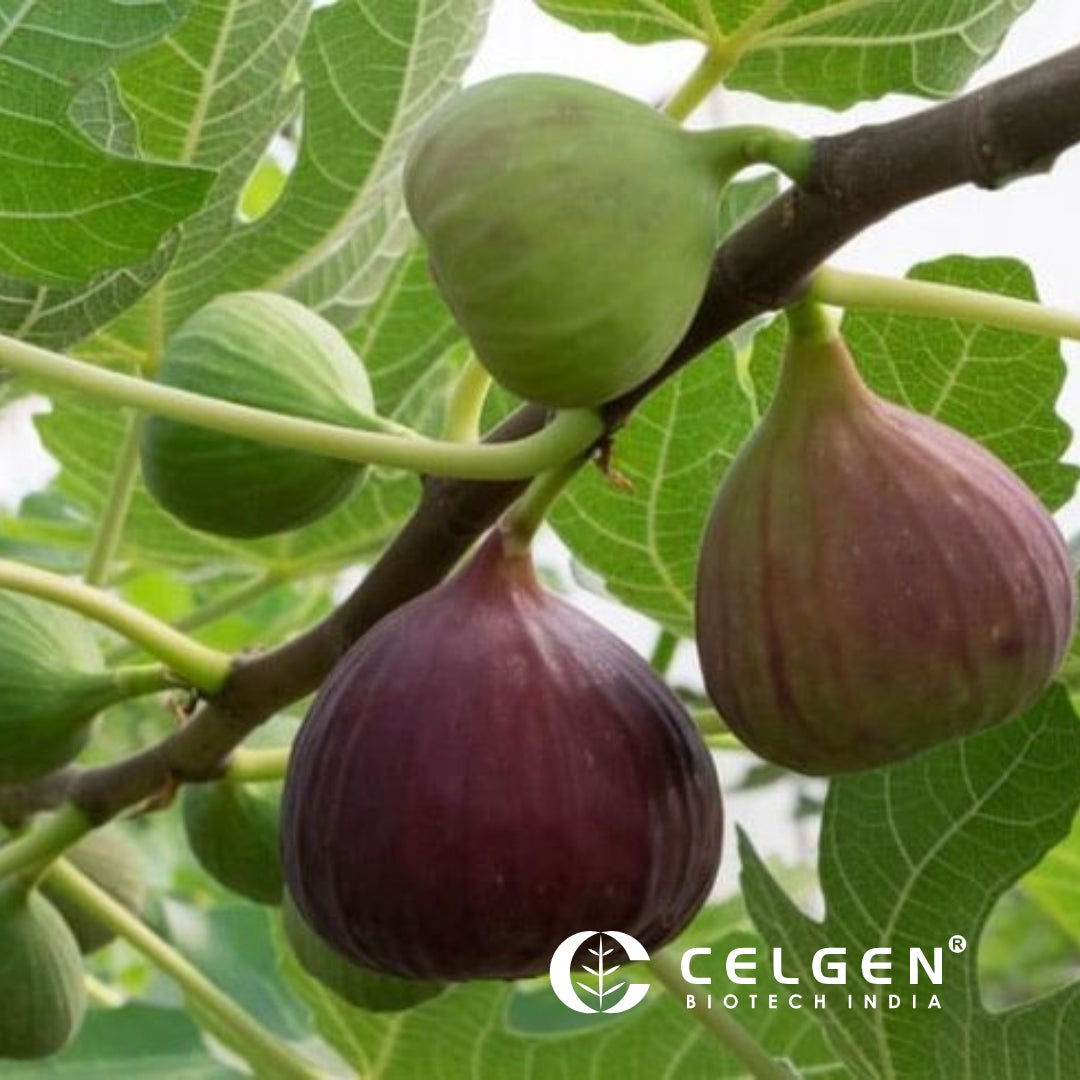
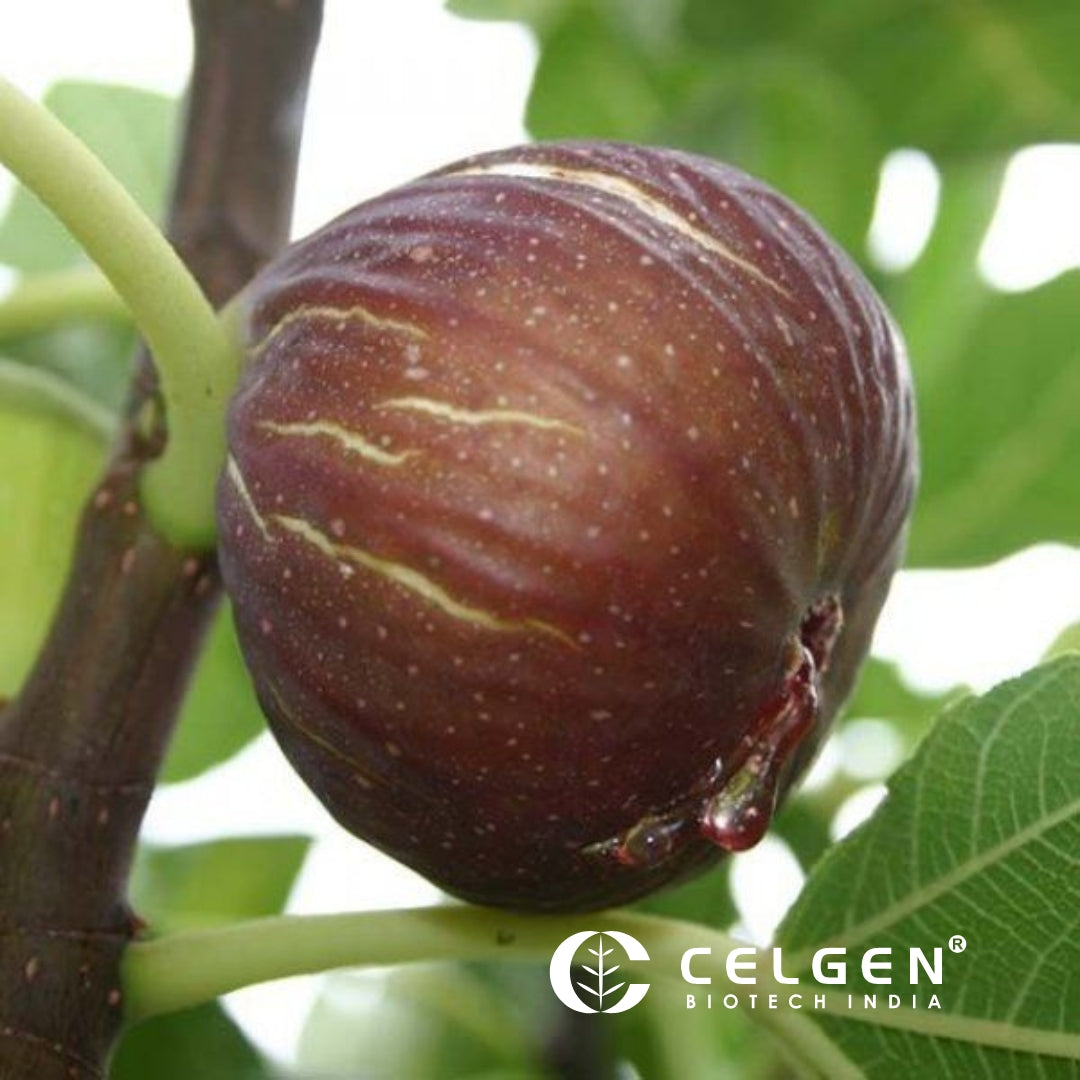
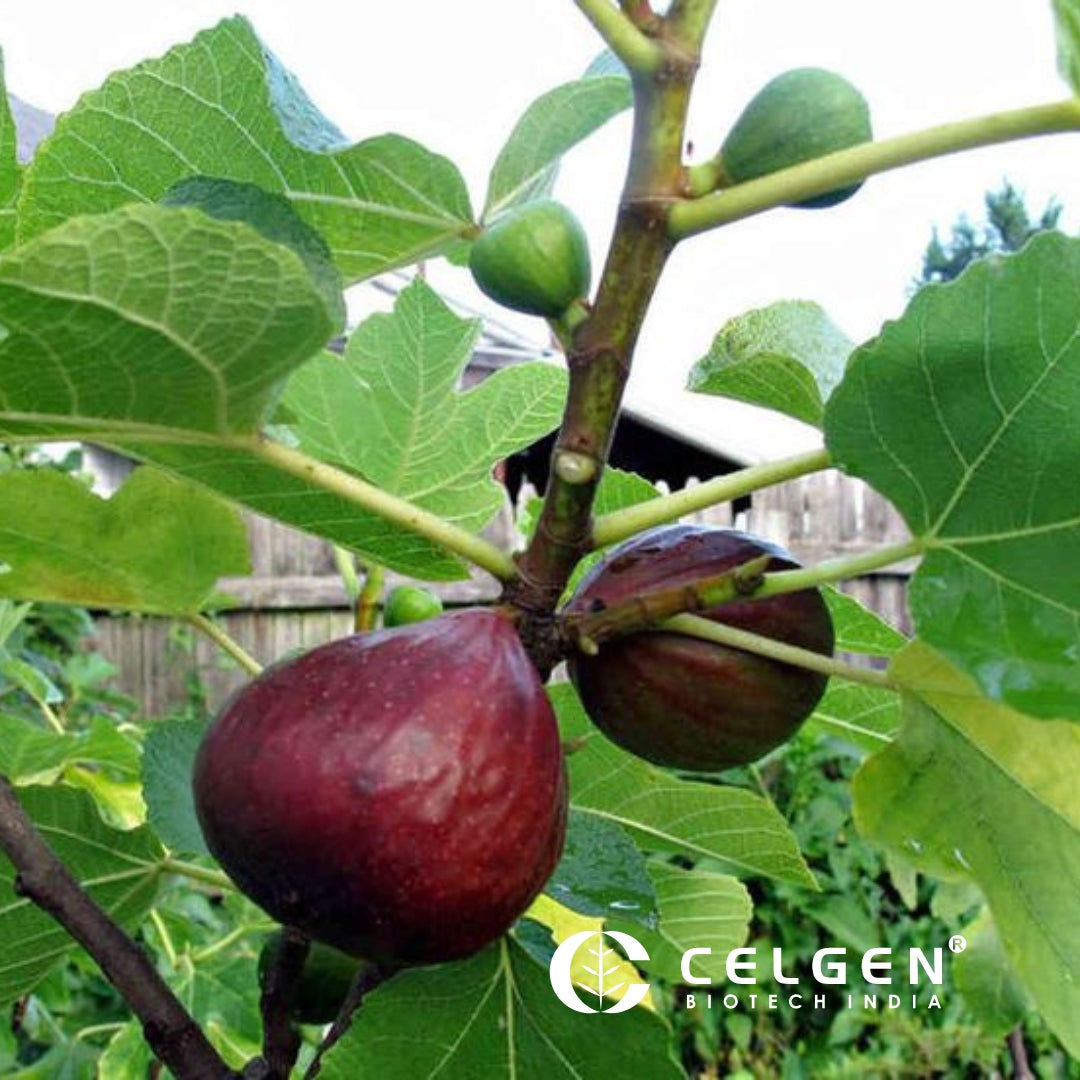

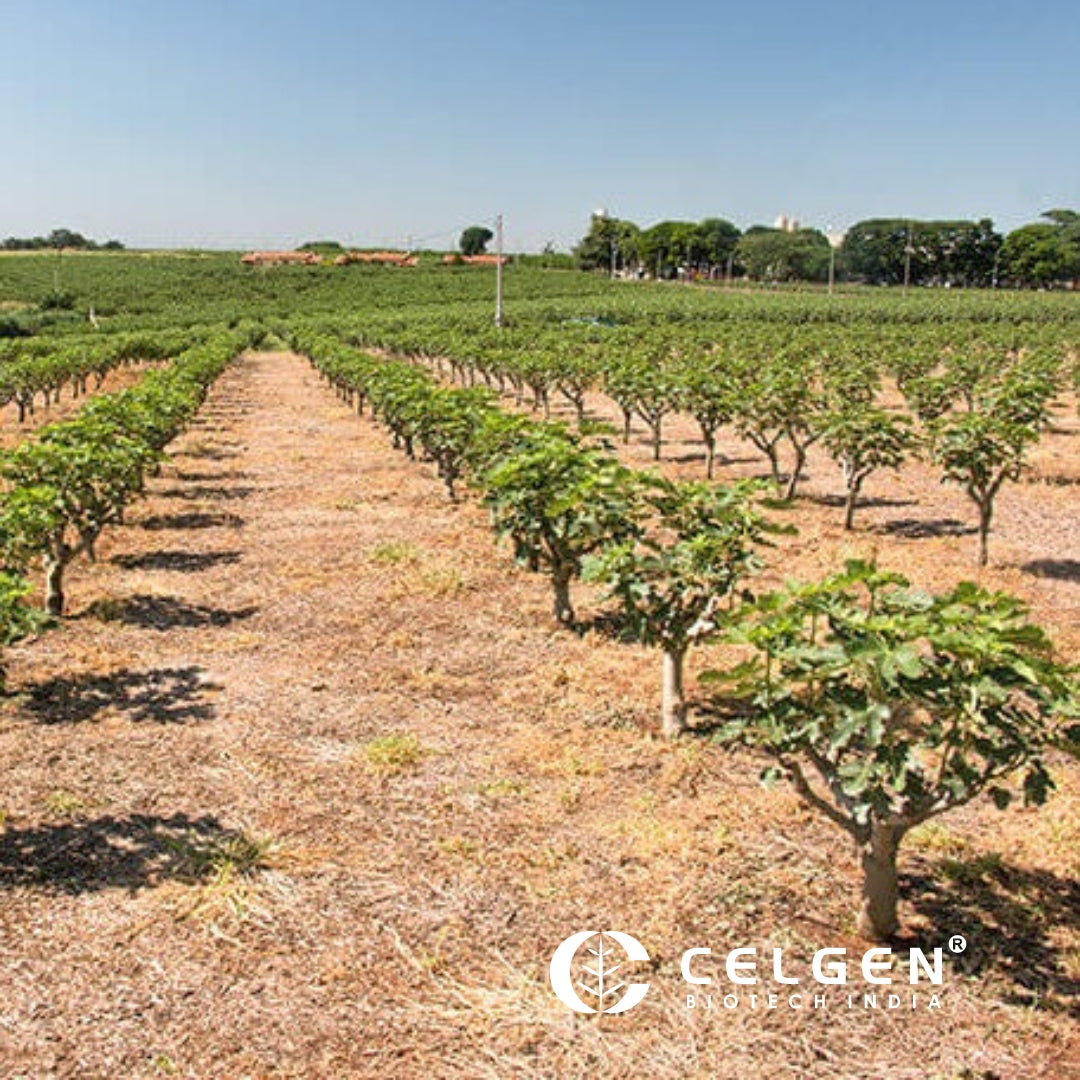
This is my 1st purchase from Celgen Biotech, my experience is highly appreciable. I will definitely purchase if I think to purchase any thing before I search to any other site.. One must go for Celgen Biotech if want best plant in your garden/ field blindely.
I received plants in very good condition even in hot dry summers month. Congratulations.
Received in good healthy plant with nice packing
Plants reached my place in very good condition. Plants are healthy and vigorous.
Fig tissue culture plant helth is very good and paking is so very very good thanks for this plant send me,,👍






